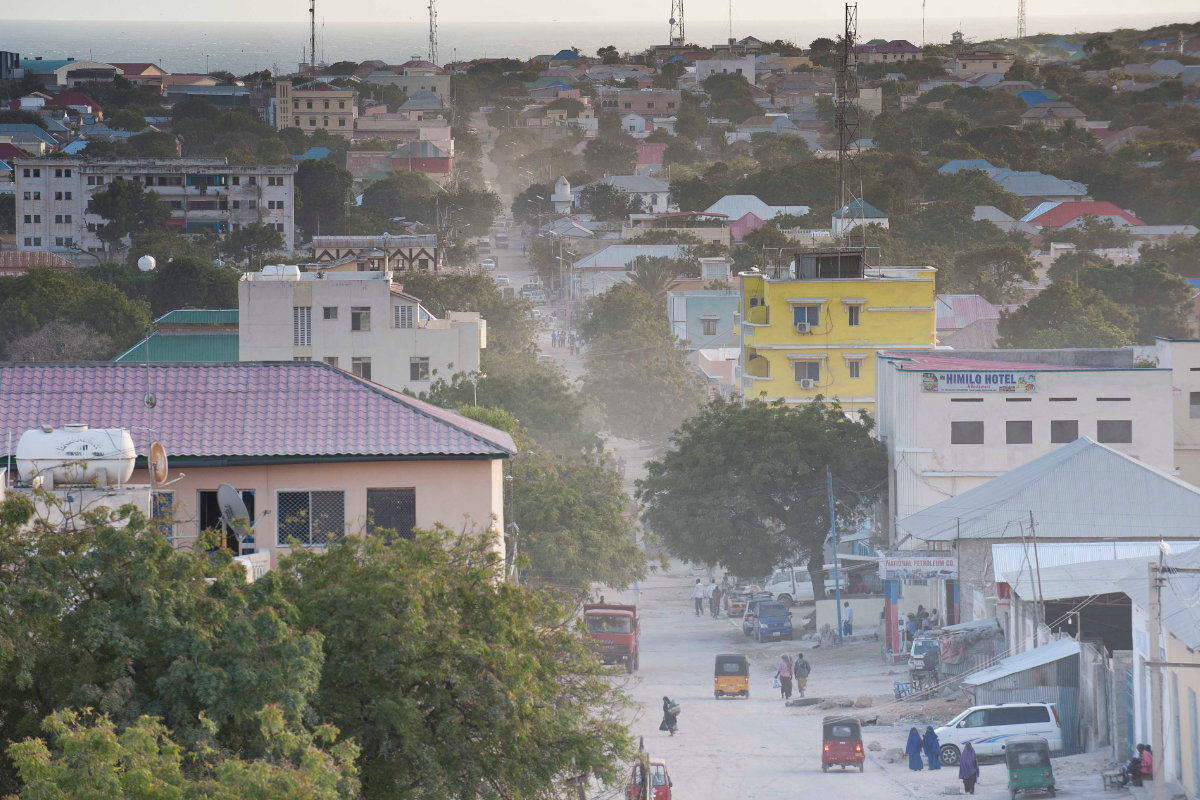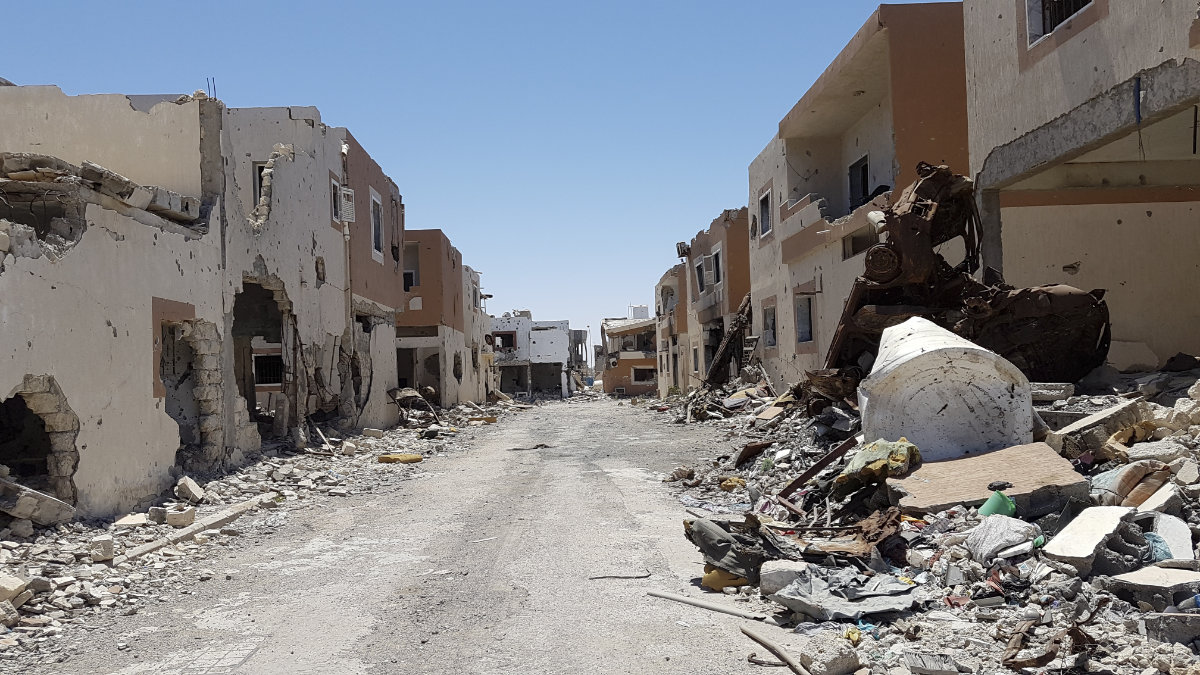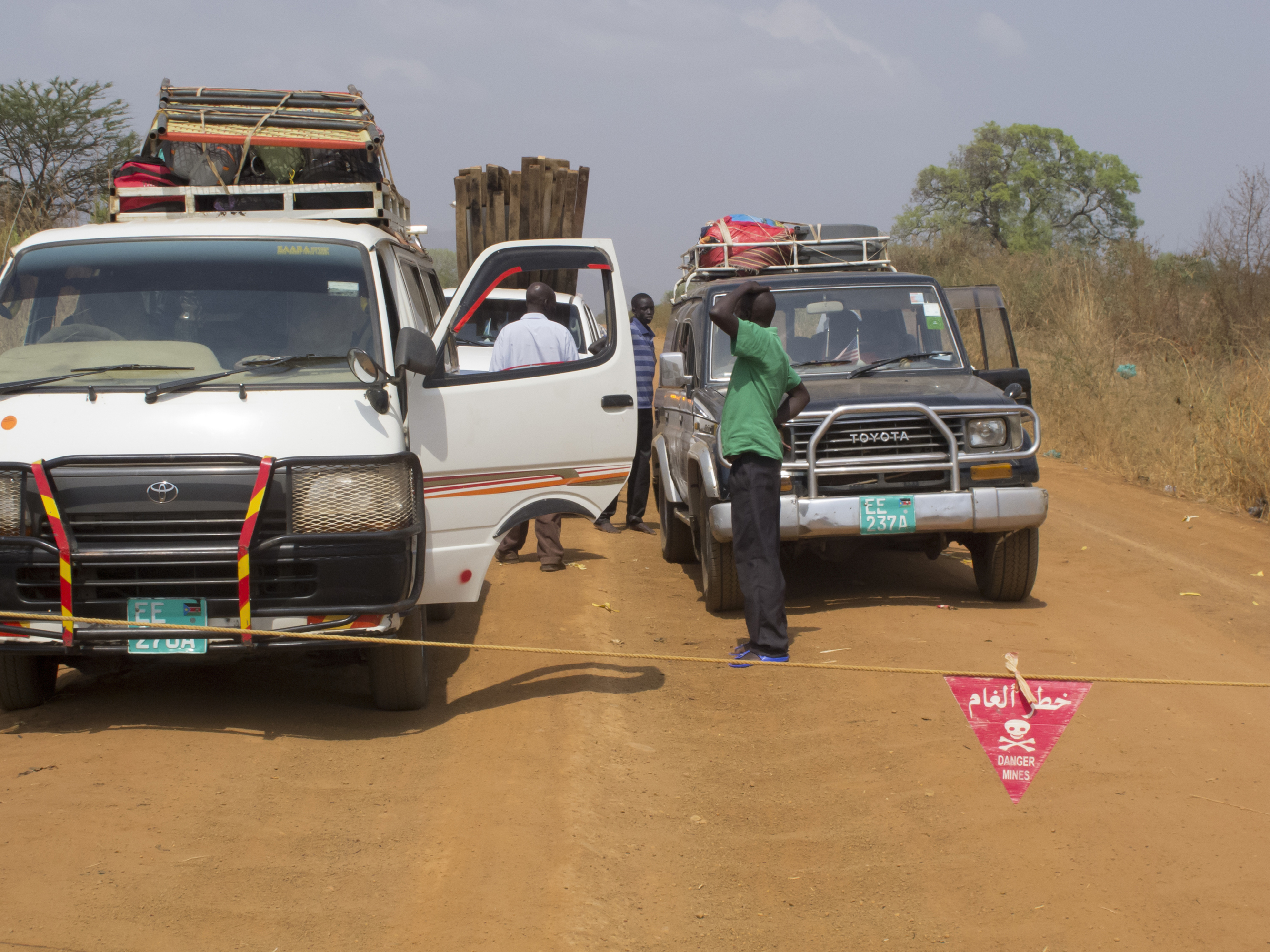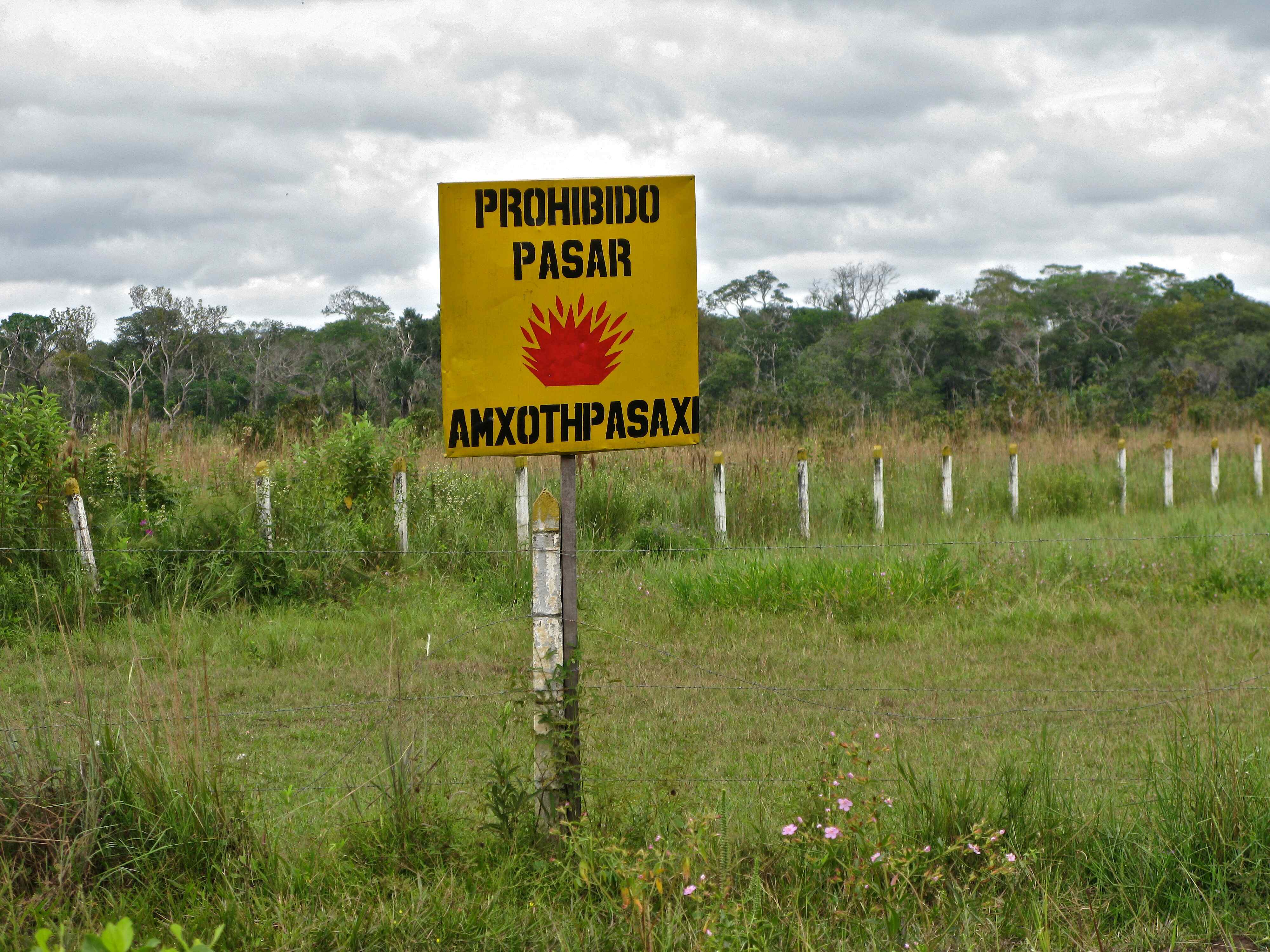
AMISOM - Ending Military Use of Educational Facilities in Somalia: 2017
IHL Says
Basic international humanitarian law (IHL) rules applicable to this situation:
Parties to the conflict must distinguish between civilians and combatants, and between civilian objects and military objects. Attacks may only be directed against combatants or military objectives (principle of distinction)
In conducting of military operations, constant care must be taken to spare the civilian population, civilians, and civilian objects. All feasible precautions must be taken to avoid, and in any event to minimize, incidental loss of civilian life, injury to civilians and damage to civilian objects including when choosing means and methods of warfare. (Principle of precautions in attacks)
The parties to the conflict must take all feasible precautions to protect the civilian population and civilian objects under their control against the effects of attacks. (Principle of precautions against the effects of attack)
All seizure of or destruction or wilful damage done to institutions dedicated to religion, charity, education, the arts and sciences, historic monuments and works of art and science is prohibited.
The case in brief
The African Union Mission in Somalia (AMISOM) was created by the African Union’s Peace and Security Council in 2007 as a peacekeeping mission with a mandate to support national reconciliation efforts in Somalia. In 2017, AMISOM officially gave control of a number of educational facilities, including the Somali National University, back to the Somali government. The premises of the Somali National University were initially taken over in 2007 as a military base to coordinate operations against the militant group Al-Shabaab.
IHL compliance highlights
- In its efforts to limit the effect of attacks on students, educational facilities and education in practice, AMISOM rehabilitated and handed over a number of educational buildings back to the Somali authorities; they also worked with partners to ensure that grounds were clear of explosive remnants. The handover was part of AMISOM’s efforts to fulfill the ‘Safe Schools Declaration’, a political commitment opened for endorsement in 2015 which outlines a set of commitments to strengthen the protection of education and ensure its continuity during armed conflict; the first of these commitments is the implementation of the Guidelines for Protecting Schools and Universities from Military Use during Armed Conflict (the Guidelines). The Guidelines are intended to lead to a shift of behaviour to reduce the military use of schools and universities. The Guidelines, in themselves, are not legally binding rules, and their preamble notes that the military use of schools is not necessarily contrary to international humanitarian law (IHL). There is no specific treaty or customary IHL rule prohibiting the use of schools or other educational facilities for military purposes, though such use does not occur in a legal vacuum. The military use of a particular school must be assessed in light of the obligations of parties to the conflict, as applicable, including to take all feasible precautions to protect civilians and civilian objects under their control against the effects of attacks by an opposing party. In this respect, the Guidelines provide useful practical recommendations. Avoiding that education facilities become military objectives and therefore liable to attack goes a long way in ensuring the safety of civilians – students and education personnel – and in preserving the civilian character of schools and their corresponding protection from attack, so that they can continue to safely operate during armed conflict.
- In July 2017, AMISOM handed over the premises of the Somali National University to the Federal Government of Somalia. The handover ceremony marked a transition from a military barracks to an institution of higher education thereby contributing to the protection and continuity of education during armed conflict.
Case prepared by Benedetta Panagia, Maria Chiara Giaquinto, Nour Taki and Karina Mele, LL.M. students at Roma Tre University, under the supervision of Professor Giulio Bartolini (IHL Professor) and Laura Di Gianfrancesco (Research assistant), Roma Tre University IHL Legal Clinic.
A. PRACTICAL IMPACT OF THE SAFE SCHOOLS DECLARATION
[Source: Global Coalition to Protect Education from Attack, Practical Impact of the Safe Schools Declaration, Fact Sheet, January 2022, page 3, available at https://protectingeducation.org/wp-content/uploads/documents/SSD-Fact-Sheet.pdf; see also Human Rights Watch, Protecting Schools from Military Use: Law, Policy, and Military Doctrine, 2019 available at https://www.hrw.org/report/2019/05/27/protecting-schools-military-use/law-policy-and-military-doctrine]
Downward Trends in Incidents of Military Use of Schools
The Global Coalition to Protect Education from Attack (GCPEA) found that the overall reported incidents of military use of schools and universities declined by more than half between 2015 and 2020 in the 13 countries that endorsed the Safe Schools Declaration in 2015 and 2016 and experienced at least one reported incident of military use during the same period (Afghanistan, the Central African Republic (CAR), the Democratic Republic of Congo (DRC), Iraq, Kenya, Lebanon, Mozambique, Niger, Nigeria, Palestine, Somalia, South Sudan, and Sudan). […]
Increased Protection of Schools from Military Use in National Policy and Practice […]
In Somalia, in 2017, in the context of implementing the Declaration, the African Union Mission to Somalia (AMISOM) handed a number of educational buildings back to the authorities, rehabilitating them first, and working with partners to ensure the grounds were clear of explosive remnants. […]
B. THE HANDOVER OF THE SOMALI NATIONAL UNIVERSITY BY AMISOM TO THE FEDERAL GOVERNMENT OF SOMALIA
[Source: AMISOM, AMISOM hands over premier university to the Federal Government of Somalia, 11 July 2017, available at https://amisom-au.org/2017/07/amisom-hands-over-premier-university-to-the-federal-government-of-somalia/]
Mogadishu, 11 July 2017 – The African Union Mission in Somalia (AMISOM) today officially handed over the premises of the Somali National University back to the federal government authorities, relinquishing control of the institution, which it had occupied for the last 10 years.
AU troops from Burundi contingent first occupied the university in 2007, starting off as a small Forward Operating Base, and later evolving into a Battalion headquarters to coordinate operations against Al-Shabaab; succeeding to drive the militants out of Mogadishu through combined efforts with other AU troops. Today’s handover paves way for the re-opening of the learning institution.
“AMISOM, with this event, is showing clearly that we have started the transition to the Somalis. We are transiting the University of Somalia from a military barracks, back into an institution of higher learning and putting it back into the hands of the Somalis,” Ambassador Francisco Caetano Madeira, the AU Special Representative for Somalia told guests at the handover ceremony, officiated by the Minister for Higher Education Mr. Abdirahman Dahir Osman.
The troops which set base at the university were relocated to the headquarters of AMISOM Sector 5, in Jowhar, in an exercise that commenced in April 2016. The AU Special Representative said relinquishing control of the university was the “start of the gradual process to hand over security to the Somali National Security Forces”, adding that it demonstrates how Somalis are leading efforts to reconstruct their country. […]
Established in 1954, the university closed its doors as a result of the outbreak of the civil war in 1991.
“We are here for a sort of triple celebration. One, is to recognize the role of AMISOM and in this case, the Burundi contingent, more broadly AMISOM, working in partnership with the Somali security forces in securing this place and so much of Somalia in the last difficult 10 years and I pay deep tribute to that,” Mr. Michael Keating, the Special Representative of the United Nations Secretary-General (SRSG) for Somalia said in his address.
Mr. Abdirahman Dahir Osman, the federal Minister for Higher Education described the handover as “a symbol of the rebirth of Somalia”.
“We give priority to security, economic development and importantly, education. We believe that education lays the foundation for sustainable development,” the minister said.
His sentiments were echoed by Mr. Mohamed Ahmed Jimale, the Rector of the university, who said handing back the premises to the federal government “marked a return of peace, security and stability”, in Somalia.
The first batch of student admissions to Somalia’s oldest university could start as early as September 2017, once the government gives the institution the green light.
[Source: UNICEF, Expanding opportunities for Somalia’s youth as the Somali National University gets back its main campus, 12 July 2017, available at https://reliefweb.int/report/somalia/expanding-opportunities-somalia-s-youth-somali-national-university-gets-back-its-main]
Mogadishu 12 July 2017 – UNICEF has welcomed the handover of the Somali National University’s main campus to the Federal Government as an important step forward in expanding opportunities for youth in Somalia.
[…] “This is a very positive move and sends a strong message on the importance of making sure all qualified Somali youth have the opportunity to continue their education after primary and secondary school to become the leaders of the future,” said Vincent Lelei, the Deputy Humanitarian Coordinator, who attended the handover ceremony.
[…]
The re-opening of the SNU was aimed at ensuring the provision of an affordable and high quality education which would expand access to higher education to those who did not have the means to attend one of the many private universities that have proliferated across the country.
[…]
The handover ceremony, attended by senior government officials, UN and AMISOM representatives, was officiated by the Federal Minister for Higher Education, Abdirahman Dahir Osman, who said education was the anchor for sustainable development. The Special Representative of the UN Secretary-General for Somalia, Michael Keating, emphasized the importance of education as the core foundation in the rebuilding of the country.
“It is important that education and health facilities remain free and disassociated from military use to allow people free access to essential services especially in the current prolonged drought,” said Jeremy Hopkins, UNICEF Somalia Representative a.i. “We should also look to the future. Somali youth make up the majority of the population and a public university offers them a once in a lifetime opportunity.”
Discussion
I. Classification of the situation and applicable law
1. How would you classify the situation in Somalia? Has there been an armed conflict, and if so, who are the involved parties? What additional information would be necessary to assess this situation? Is AMISOM bound by IHL? (GC I-IV, Art. 3, AP-II)
II. Protection of schools in armed conflicts
2. How does IHL protect the civilian population from the effects of hostilities? How are the principles of distinction, proportionality and precautions construed under IHL? (API, Arts 48, 50, 51, 52, 57, 58; PII, Art.13; CIHL Rules 1, 7, 11, 14, 15, 17)
3. Does IHL allow parties to a conflict to target civilian facilities, including schools and universities? What happens if a school is occupied by a military force? Should it be considered a military objective or a civilian object? ( API Arts 48, 51, 52, 57; CIHL Rules 1, 7, 22, 23, 24)
4. (Document B) Are parties to a conflict prevented from using civilian infrastructure, including schools and universities, as military facilities under IHL? Concerning their protection, is there any difference between an abandoned or evacuated school in comparison to a building in function? Does the military use of schools entail additional risks in terms of compliance with IHL principles? (API, Arts 51, 57; 58; CIHL, Rules 11, 14, 15)
5. What is the protection to be granted to students and teachers? Is it possible to consider school and universities as objects indispensable for the survival of the civilian population? (API, Arts 48, 50, 51, 52; 54; CIHL Rule 54)
III. Elements contributing to respect for IHL
6. (Documents A and B) In your opinion, what is the reason that led AMISOM to return the premises of the Somali National University and other educational facilities to the Somali authorities? Are political transition, the role of education, and possible sustainable development of the country relevant incentives for ensuring compliance with IHL?
7. (Document B) What is the legal value of the Safe School Declaration? What is the relevance of political commitments in furthering compliance with IHL? Does the Safe Schools Declaration go beyond the requirements of IHL, and, if so, how? What was its specific impact on AMISOM’s decision to return the premises of educational facilities? Did AMISOM endorse the Safe Schools Declaration?
8. What is the role of the UN Security Council resolutions 1998 (2011) and 2143 (2014) on the implementation of IHL? Are these resolutions binding? Which influence do you believe they had on the development of the Safe Schools Declaration?
9. Which guidelines would you apply to justify the release of the university? Why, in your opinion, do the Guidelines specify that “any traces or indication of militarization or fortification should be completely removed following the withdrawal of fighting forces, with every effort made to put right as soon as possible any damage caused to the infrastructure of the institution”?



